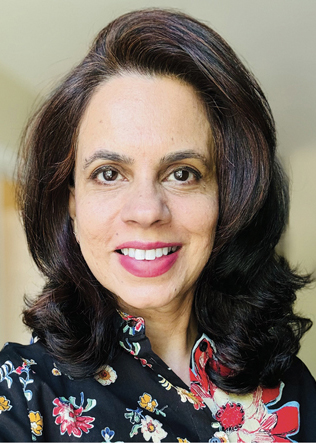By Preeti Vasishtha

At first glance, public policy and actuarial science might seem like distant disciplines-one is typically shaped by political debate and legislative compromise, the other is rooted in data, models, and mathematics. But look closer and you’ll find that the two are deeply connected. The strength of a public policy often depends on how well it has been informed by evidence and designed to hold up over time. That’s where actuaries come in.
Actuaries are problem solvers who bring a combination of technical insight and long-term perspective. Their work touches nearly every area of public concern: retirement security, insurance affordability, climate risk, and emerging technologies, to name a few. These are complex issues, and they demand solutions that are rigorous and responsive. And they require the kind of objective, data-driven thinking actuaries are trained to provide.
As long-term financial security, demographic shifts, and emerging risks intersect, state and federal governments face tough questions. How do we create affordable insurance products? How is climate change affecting personal health, property, and community solvency? What is the impact of technologies such as artificial intelligence and cybersecurity?
Our members and public policy team address such questions and more. They help policymakers see the trade-offs, understand unintended consequences, and adopt a long-term perspective by offering objective, actuarially grounded insights.
“Bringing Objectivity to Public Discourse” (page 12) highlights how the Academy engages across the policymaking spectrum at the federal and state levels, and through cross-practice initiatives. Building on that theme, Academy President Darrell Knapp’s message (page 6) focuses on how relationships with various stakeholders at the federal and state levels and rigor support the organization’s public policy efforts. Further reinforcing this perspective, Executive Director and CEO William J. Michalisin, in his inaugural column (page 8), reflects on how the Academy advances the public interest through professionalism, active public policy engagement, and a spirit of collaboration that exemplifies the U.S. actuarial profession at its best.
“Building a Public/Private Framework for LTC Financing” (page 20) explains how a coordinated approach between public programs and private insurance can address the growing long-term care needs of older adults and their families. “A New Look at Designing ERISA Retirement Plans” (page 48) offers retirement plan options that balance lifetime income predictability for retirees with manageable risk for employers.
Moving beyond public policy, other articles explore several timely issues. “Strengthening Stronger NAIC-Academy Ties for the Public Good” (page 26)-the concluding part of my interviews with NAIC leaders-explores how the NAIC-Academy collaboration supports regulatory decisions, sharpens risk oversight, and reinforces the vital role of actuaries in insurance.
As insurtech matures, “Inside Insurtech’s Second Wave,”(page 34) looks at the essential role actuaries play, bringing together technical expertise and strategic insight to improve and automate the insurance industry. And finally, “Rethinking Demographic Changes in Actuarial Models,” (page 40) shows howas demographic patterns grow more complex,integrating complexity theory into actuarial science and deeper engagement with heterodox economic perspectives can help actuaries build more resilient, adaptive models for the future.
Through these articles, we not only showcase what actuaries do but also highlight where their expertise is urgently needed. And regarding public policy, when it is informed by actuarial expertise, it is grounded in data and shaped by long-term perspectives, laying a strong foundation for policies that endure amid changing conditions.
~~~
On a personal note, I’m honored to share that I’ve been selected as a member of American Society of Association Executives’ 2025-2026 Communications Professionals Advisory Council. It’s a privilege to join a group committed to advancing the strategic role of communications across organizations in the U.S. As an editor and content leader, I see how thoughtful storytelling and well-crafted content can translate complex actuarial work into insights that inform public understanding and shape policy conversations. I look forward to learning from peers across sectors and bringing fresh insights into our editorial and content strategy-continuing to frame, support, and elevate the Academy’s voice in shaping policy.
Preeti Vasishtha is editor-in-chief, Contingencies, and the Academy’s director of content.